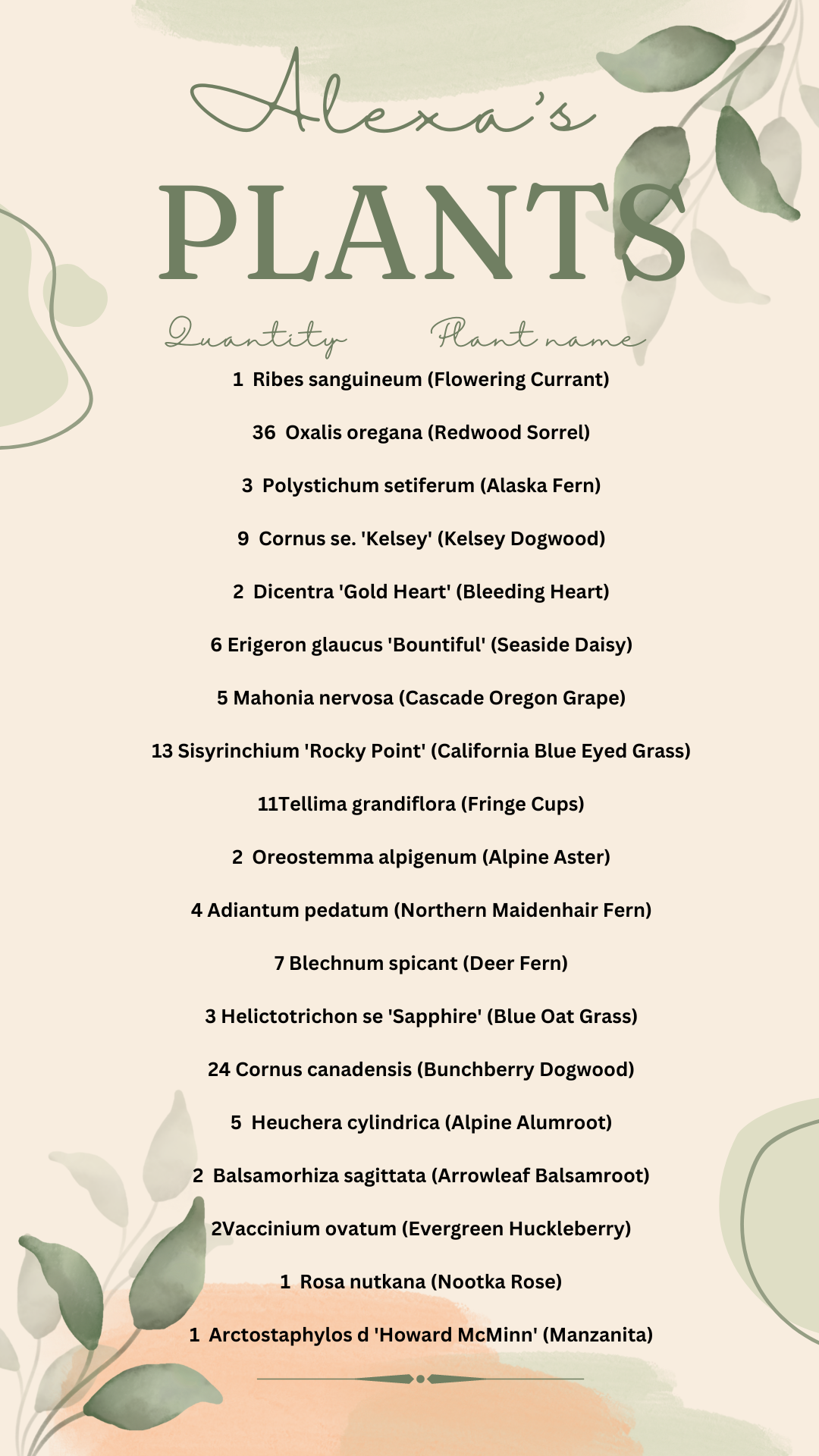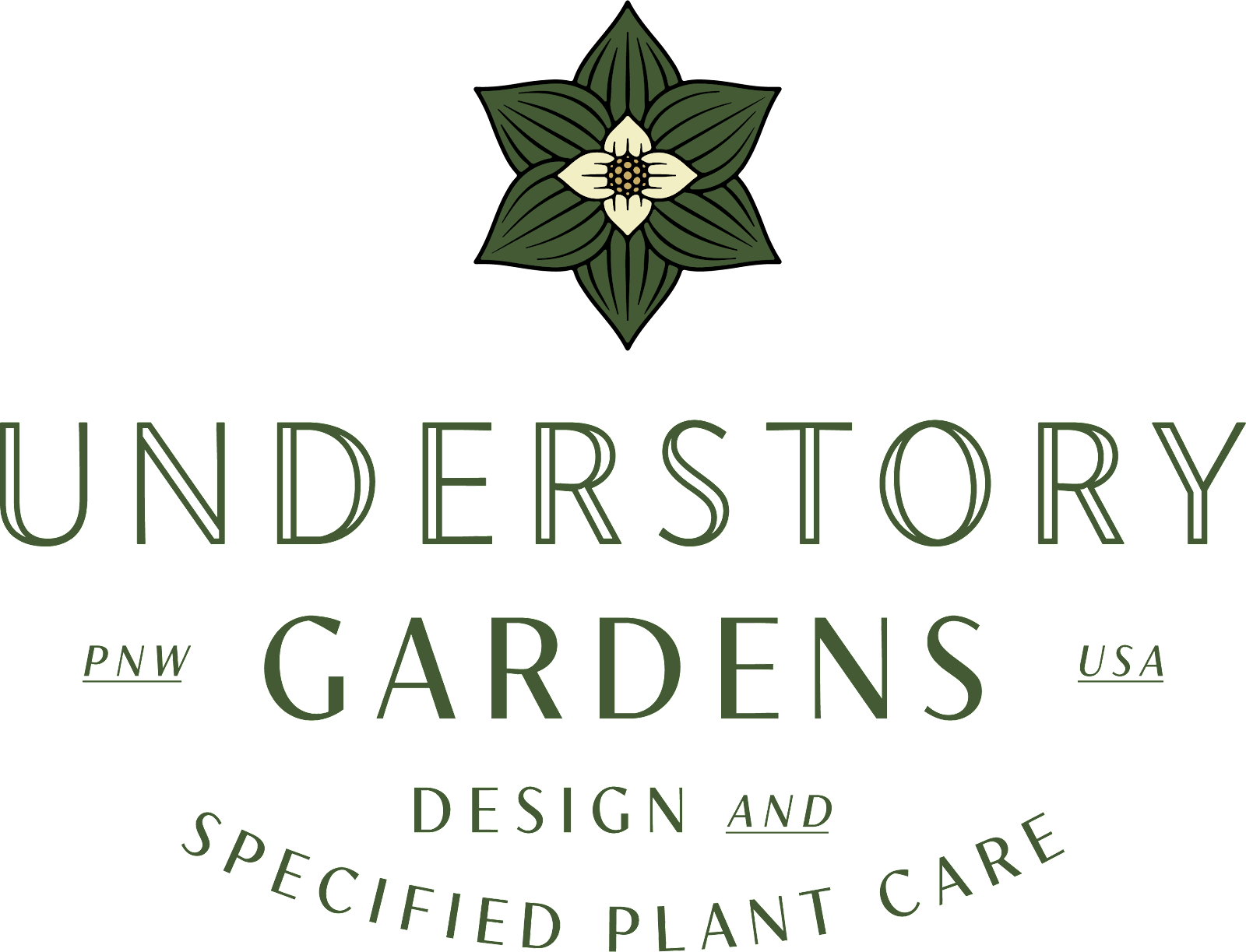A front garden landscape design for the Pacific Northwest
Acid-loving plants put to the test in small Seattle garden
This small Seattle front garden design plan by Alexa LeBouef Brooks puts native acid-loving plants to the test.
The Seattle area landscape designer first removed what was once a grass lawn and then had to deal with two very large and established cedar trees that were already on the property and had, over the years, turned the soil in the front garden acidic.
The design is installed in a neighborhood just outside of Seattle and very close to the University of Washington.
Alexa explains that the site is a small front lot with two very large and established cedar trees, one on either side of the garden.
Her goal was to create a natural, sustainable garden that both looks good year-round and is able to deal with changing environmental conditions associated with climate change in the future.
“You are limited in what you can plant underneath our Northwest conifers because they demand every drop of water available and make the soil very acidic.”
All the plants included in the design are acid loving plants and should establish well in the area. The House is East facing but gets adequate sunlight throughout the day.
The client wanted this garden to be an homage to a best friend who had recently died.
(Be sure to click on the link here for more on Alexa LeBouef Brooks and Understory Gardens.)
Also, if you are interested in native plants, be sure to check out my post on Gardening with Native Plants of the Pacific Northwest.
Alexa explains that for years the friends had planned on creating a native garden together.
“I feel honored to have been a part of this project, and help the clients vision come to life."
Below is a chart showing the plants Alexa used to create the garden. On the left are the number of plants and on the right is the name of the plants.
Above is a plant guide for the garden with the numbers listed to the left of the plant’s name.
Alexa LeBouef Brooks is a young landscape designer in the Seattle area who is using her passion for native plants along with her background in fine art to create exciting natural and woodland gardens.
She recently told Ferns & Feathers that the “development of my style of gardening grew from my desire to always be connected to the natural beauty I spent so much time in as a child. Although I embrace multiple garden aesthetics, the native and natural style of gardening keeps me rooted in the land I call home.”
Through the excellent work of the Seattle-based, non-profit organization called Plant Amnesty, many of Alexa’s clientele are already aware of the importance of protecting the ecology of the area.
The organization’s focus is to educate the greater Puget Sound area on proper pruning, responsible gardening and land preservation.
“I find that most clients who seek gardeners and designers through Plant Amnesty have a shared interest in maintaining the integrity of our delicate ecology and environment. Even outside of my Plant Amnesty clients, when a potential client sees my business name and website, they are anticipating a particular style of gardening from my work. Most are open to the suggestions I make when designing their gardens and plugging in additional plants to an existing design as well as garden maintenance methods,” Alexa explains.
Changing the way we garden is important to Alexa. Climate change is an ever increasing problem in the Pacific Northwest as well as elsewhere and Alexa is passionate about designing and installing gardens that will meet the future needs of her clients.
Issues around water conservation and installing plants that can not only deal with the increasingly hotter summers Seattle residents face, but the colder winters, are an important part of Alexa and Understory Gardens’ approach to the new challenges on gardening in the Pacific Northwest.
If you are on the lookout for high quality, non-GMO seed for the Pacific North West consider West Coast Seeds. The company, based in Vancouver BC says that “part of our mission to help repair the world, we place a high priority on education and community outreach. Our intent is to encourage sustainable, organic growing practices through knowledge and support. We believe in the principles of eating locally produced food whenever possible, sharing gardening wisdom, and teaching people how to grow from seed.”
Plant list for Seattle front garden design plan
Below is a list of the plants used in the garden in case the chart is difficult to read
1 Ribes sanguineum (Flowering Currant)36Oxalis oregana (Redwood Sorrel)
3 Polystichum setiferum (Alaska Fern)
9 Cornus se. 'Kelsey' (Kelsey Dogwood)
2 Dicentra 'Gold Heart' (Bleeding Heart)
6 Erigeron glaucus 'Bountiful' (Seaside Daisy)
5 Mahonia nervosa (Cascade Oregon Grape)
13 Sisyrinchium 'Rocky Point' (California Blue Eyed Grass)
11 Tellima grandiflora (Fringe Cups)
2 Oreostemma alpigenum (Alpine Aster)
4 Adiantum pedatum (Northern Maidenhair Fern)
7 Blechnum spicant (Deer Fern)
3 Helictotrichon se 'Sapphire' (Blue Oat Grass)
24 Cornus canadensis (Bunchberry Dogwood)
5 Heuchera cylindrica (Alpine Alumroot)
2 Balsamorhiza sagittata (Arrowleaf Balsamroot)
2 Vaccinium ovatum (Evergreen Huckleberry)
1 Rosa nutkana (Nootka Rose)1Arctostaphylos d 'Howard McMinn' (Manzanita)



